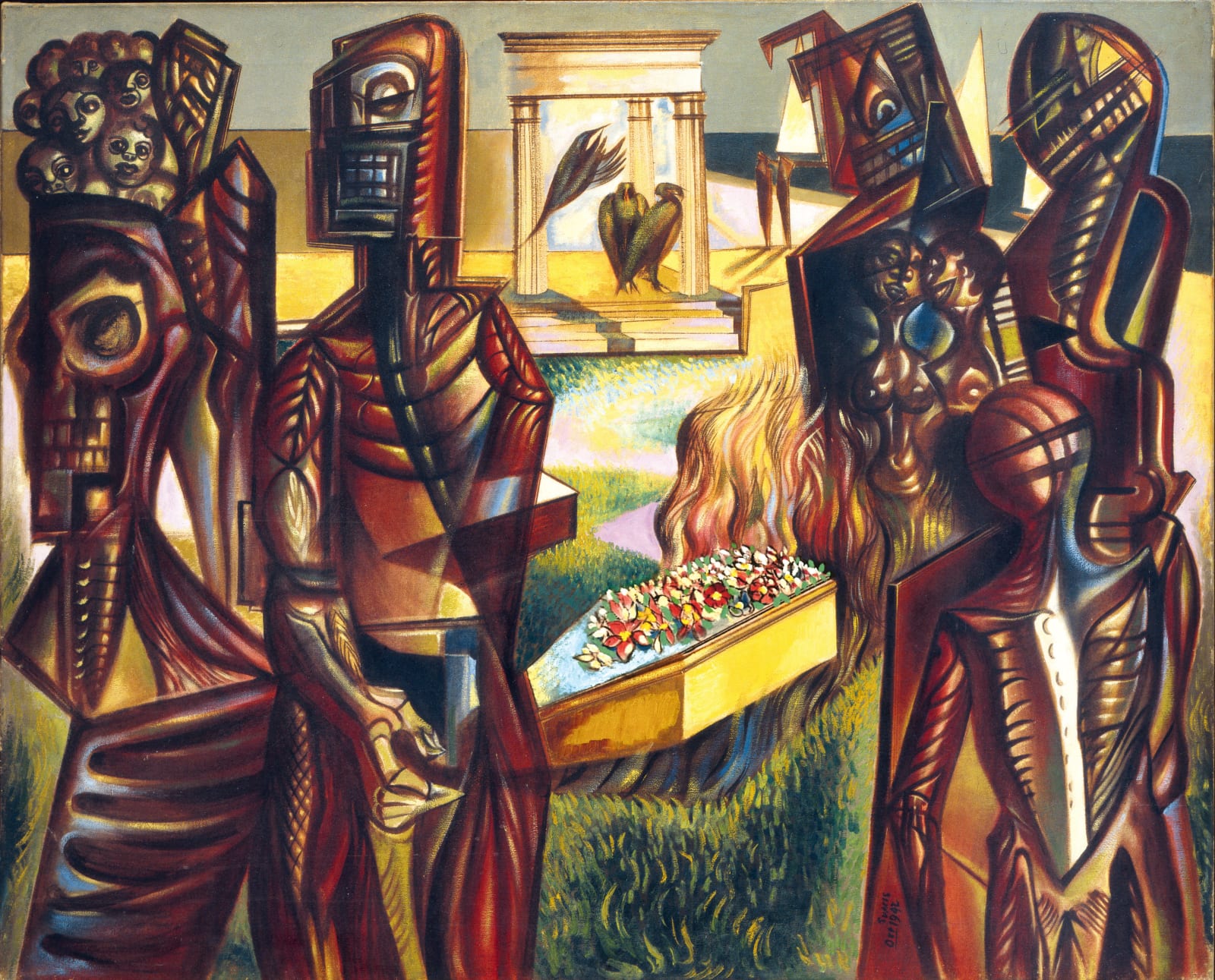Exhibitions
Leicester Galleries: Imaginative Paintings by Merlyn Evans, Feb 1949, no. 11Midland Group Gallery, London "Paintings and Drawings by Merlyn Evans" July 1952, no.5
Literature
Ex-Studio: Artists/Estates, Jonathan Clark Fine Art, 2009, illustrated p.35Mel Gooding, Merlyn Evans, Thames & Hudson, 2004, illustrated p.60
When shown at the artists Leicester Galleries exhibition of 1949, ‘The Entombment’ was the highest priced painting in the show, reflecting Evans particular regard for the picture. From the late 30s onwards, Evans was producing his most powerful work against a backdrop of increasing tension on the world stage. With the outbreak of WW2, paintings such as ‘Puppet Government’ and ‘The Looters’, painted in 1940, were expressions of Evans’ outrage and despair at the folly of mans aggression. ‘The Entombment’, painted in1942, is the culmination of these feelings, expressed through very personal motifs.
The painting depicts a world overtaken by molochs; ancient pagan deities, wreckers of civilisation, destroyers of the innocents. The gifts of a peaceful world, the art and culture of centuries past, the simple pleasures of sailboats and sunshine, receding into the background, all threatened by a world teetering on the edge of madness.
Evans title for the painting is telling, however. ‘The Entombment’ implies an element of hope; the possibility of resurrection. He suggests society is not irrevocably doomed, but imprisoned in a tomb by its own avarice and stupidity. It is a wake-up call.
Referring to the time ‘The Entombment’ was painted, Mel Gooding writes, ‘Evans was gripped by an understandable sense of
political foreboding, an almost visceral fear and loathing of the currant global state of affairs, but also by a deeply personal anxiety, even, perhaps, a degree of psychic disturbance. Their complexity and ambiguity, and the dark obscurities of feeling and pain to which their strange imagery seem to allude, give these paintings an extraordinary
affective potency’.
Although Evans refused to be part of any particular group, he believed that the artist’s role in uncertain and turbulent times was to present ‘the aggressive instinct for power and destruction’ in a similar way to Picasso’s Guernica, which Evans had seen in the Spanish Pavilion of the International Exhibition at the World’s Fair in Paris in 1937. ‘Guernica’ and ‘The Entombment’ were both chosen to be exhibited at the Sao Paolo biennale of 1953.
